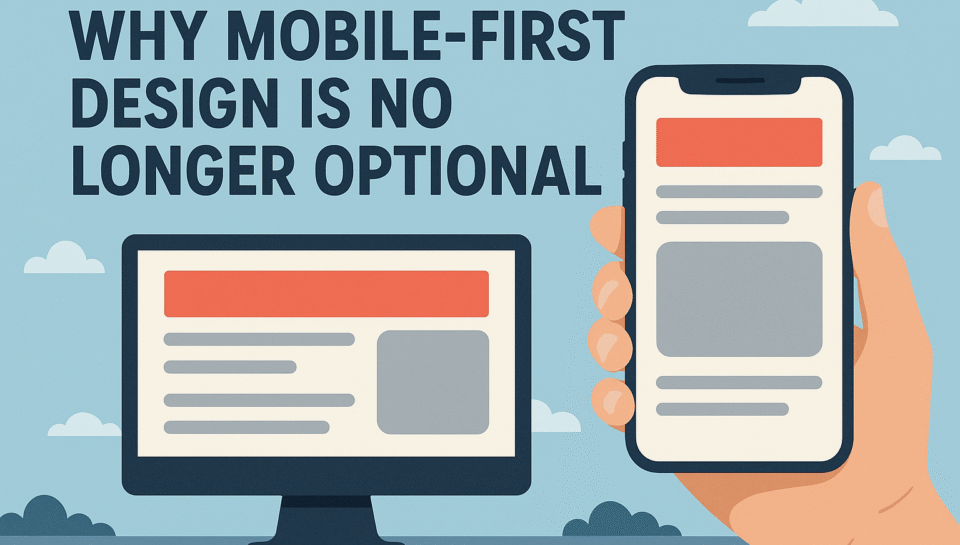
Why Mobile-First Design is No Longer Optional
In today’s digital landscape, designing for mobile isn’t just a trend — it’s a necessity. With more than 60% of global web traffic coming from mobile devices, businesses that neglect mobile users are leaving money — and user satisfaction — on the table.
Whether you’re building a new website or updating an old one, mobile-first design is no longer optional — it’s the new standard.
What Is Mobile-First Design?
Mobile-first design is a web design strategy that starts with the smallest screen size — mobile — and scales up for larger screens like tablets and desktops. Instead of designing a full desktop site and trying to “shrink” it down, the mobile-first approach ensures the most essential content and functionality is available to users on the go.
Why Mobile-First Matters More Than Ever
1. Mobile Usage Is Dominating
Today’s users spend more time browsing, shopping, and researching on their phones than ever before. If your website isn’t optimized for mobile, you’re offering a subpar experience to the majority of your visitors.
2. Google Prioritizes Mobile-First
Since 2019, Google has switched to mobile-first indexing, meaning it primarily uses the mobile version of your site for ranking and indexing. A poorly designed mobile site can hurt your SEO and make it harder for people to find you online.
3. Faster Load Times = Better Engagement
Mobile users expect fast load times and smooth interactions. A mobile-first site is designed with speed and efficiency in mind, helping reduce bounce rates and keep users engaged.
4. Better User Experience = More Conversions
A site that’s easy to navigate on a phone builds trust and credibility. Whether it’s filling out a contact form, making a purchase, or booking a service — a smooth mobile experience increases conversion rates.
5. Future-Proofing Your Brand
From smartwatches to foldable phones and beyond, screen sizes and devices continue to evolve. Starting with a mobile-first approach means your design is naturally more flexible and ready for what’s next.
Key Elements of a Mobile-First Website
Responsive Layouts: Content and images should adapt fluidly to any screen size.
Simplified Navigation: Clear, thumb-friendly menus that are easy to tap.
Fast Load Speed: Compress images, reduce scripts, and use caching to ensure speed.
Clear Call-to-Actions: Buttons and forms should be easy to see and use on smaller screens.
Prioritized Content: Show users what matters most — fast.
Is Your Website Ready for Mobile?
If your current website was built years ago or hasn’t been updated with mobile in mind, it might be time for a redesign. Mobile-first isn’t just about visual design — it’s about creating a better experience for every user, on every device.













